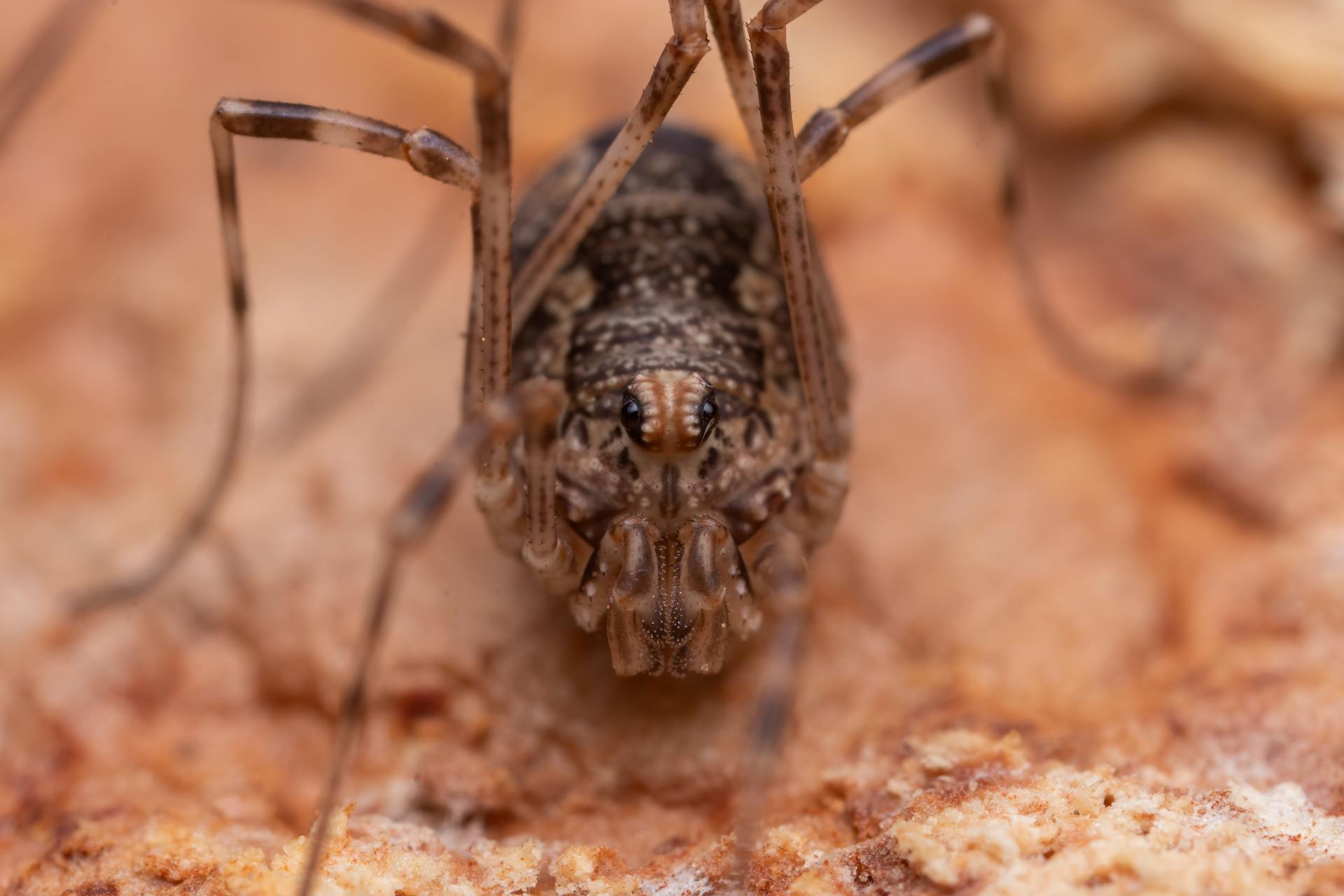
Toxocara canis in humans is a global health concern that affects millions of people worldwide. The parasite is found in over 30% of dogs worldwide.
Toxocara canis is a type of roundworm that can infect humans through contaminated soil, feces, or contaminated food and water. This can happen when people come into contact with infected dog feces or contaminated soil, often through gardening or playing with dogs.
The parasite can cause serious health problems in humans, including toxocariasis, which can lead to vision loss, seizures, and even death. According to the World Health Organization, toxocariasis is a significant public health problem in many parts of the world.
In the United States alone, it's estimated that over 40 million people are at risk of toxocariasis due to contaminated dog feces in their communities.
What Is Toxocariasis?
Toxocariasis is a zoonosis, which means it's a disease that can be transmitted from animals to humans. This disease results from infection with common roundworms Toxocara canis and Toxocara cati.
The definitive hosts of these roundworms are cats and dogs. This means that if you have pets, they can potentially carry the infection.
Symptomatic infection is significantly less common than the overall seroprevalence, which has been estimated at 13.9% in the United States. This means that even if you have been exposed to the parasite, you may not show any symptoms.
Geographic Distribution and Prevalence
Toxocara canis is a parasite that's found globally, but its prevalence is highest in developing countries. This is unfortunate because these countries often have limited resources to deal with the issue.
People in lower socioeconomic strata in developed countries are also more likely to be infected. This highlights the importance of addressing socioeconomic disparities in public health.
The prevalence of ocular toxocariasis, a serious condition caused by Toxocara canis, varies by region. In the United States, for example, new cases were reported primarily in the South between 2009 and 2010.
Geographic Distribution
Toxocara canis and T. cati are found worldwide, but their prevalence is highest in developing countries. These countries have more people and animals infected with the parasites.
In developing countries, the parasites are common in both domestic dogs and cats. This is due to poor living conditions and lack of proper sanitation.
The parasites are also found in people in these countries, often in those who handle infected animals or contaminated soil. This is a significant public health concern.
In developed countries, the prevalence of the parasites is lower, but still exists. People in lower socioeconomic strata are more likely to be infected, highlighting the need for education and awareness about parasite control and prevention.
Check this out: Can Dogs Pass Parasites to Humans
Prevalence and Incidence
In the United States, the prevalence of ocular toxocariasis has been measured in various subpopulations, including a North Californian uveitic population, where 1% of patients were found to have the disease.
A significant number of new cases have been reported in the country, with 68 new cases occurring from September 2009 to September 2010, according to the CDC.
Ocular toxocariasis typically affects children and early adolescents, but it can occur in people of all ages, with 23 case studies showing patients ranging from 8 to 45 years old.
The average age of patients in the United States is 8.1 years, with a range of 1 to 60 years, as reported by the CDC in 2010.
Interestingly, the majority of new cases were reported from the South, with 57 new cases occurring in that region during the same time period.
Here's an interesting read: Human Years
Clinical Presentation and Diagnosis
Toxocariasis can manifest in various ways, depending on the individual's immune response and the parasitic load. Most cases are asymptomatic, especially in adults.
Visceral larva migrans (VLM) is a more severe form of the disease, primarily affecting young children, and can cause a range of symptoms including fever, headache, urticaria skin rash, cough, asthma, and abdominal pain.
In VLM, larvae migration can incite inflammation of internal organs and sometimes the central nervous system, leading to symptoms like pallor, fatigue, weight loss, anorexia, and increased irritability.
Eosinophilia is a common laboratory finding in toxocariasis, with raised levels of eosinophils detectable in the blood.
The definitive diagnosis of toxocariasis is based on the detection of Toxocara larvae in tissue samples, but this is often not necessary. Clinical features and blood test results, such as markedly raised white cell count with raised eosinophils and raised total IgE, are usually sufficient for diagnosis.
A list of diagnostic criteria is as follows:
- Markedly raised white cell count with raised eosinophils.
- Raised total IgE.
- Raised specific IgE or IgG antibodies against Toxocara can be detected with an enzyme-linked immunosorbent assay (ELISA).
- Eosinophil levels are usually normal in patients with chronic skin manifestations of toxocariasis.
The ELISA test can be modified to confirm ocular larva migrans (OLM) using fluid samples from inside the eye.
Clinical Presentation
Toxocariasis is a parasitic infection caused by the Toxocara parasite, which can lead to a range of clinical presentations. The main clinical presentations of toxocariasis are visceral larva migrans (VLM) and ocular larva migrans (OLM).
VLM is the most common presentation, occurring mostly in preschool children, and is characterized by the invasion of multiple tissues, including the liver, lung, skeletal muscle, and heart. Symptoms can be nonspecific and include fever, myalgia, weight loss, cough, rashes, and hepatosplenomegaly.
In rare cases, VLM can lead to severe cardiac, pulmonary, or neurologic involvement, which can be life-threatening. The larvae can also migrate to the central nervous system, causing eosinophilic meningoencephalitis.
OLM, on the other hand, is a rare presentation that occurs mostly in older children or young adults. It is characterized by the migration of larvae to the eye, which can cause various ophthalmologic lesions and lead to visual impairment.
The larvae can produce uveitis, retinitis, or endophthalmitis, and in some cases, can cause permanent visual damage or blindness. Associated larval granulomas have been misdiagnosed as retinoblastoma in some cases.
Toxocara eggs are not clinically diagnostic for human cases, as humans are incapable of harboring adult worms that pass eggs. The eggs are found only in the feces of definitive hosts, such as cats and dogs.
Here is a summary of the clinical features of toxocariasis:
The diagnosis of toxocariasis is usually based on clinical features and results of blood tests, including markedly raised white cell count with raised eosinophils, raised total IgE, and raised specific IgE or IgG antibodies against Toxocara.
Incubation Period
The incubation period for Toxocara eggs is a critical factor in understanding the development of this parasitic infection. Toxocara canis females can produce up to 200,000 eggs a day.
These eggs require a minimum of 2-6 weeks to develop into the infectious stage, and under ideal summer conditions, they can mature to the infective stage after just two weeks outside of a host.
The eggs' resistant outer shell allows them to remain infectious for years, provided there's sufficient oxygen and moisture availability.
High temperatures and low moisture levels can quickly degrade the larvae during the second stage of development, making it essential to control these environmental elements.
Laboratory Diagnosis
Diagnosis of toxocariasis, caused by the Toxocara canis parasite, relies heavily on indirect means due to the larvae's tendency to be trapped in tissues and not easily detected through morphology.
Serology, or blood tests, are a crucial tool in diagnosing toxocariasis, particularly for visceral larva migrans (VLM) and ocular larva migrans (OLM).
Laboratory findings, including eosinophilia, are also important in making a presumptive diagnosis.
A compatible exposure history, such as playing with puppies or kittens or having pica/geophagia behaviors, can also be a key indicator of toxocariasis.
The most useful test for ocular toxocariasis is an ELISA, which has a 90% sensitivity and specificity for VLM.
However, OLM patients often do not have marked eosinophilia, and the ELISA test may not be as effective in detecting the parasite.
In some cases, the ELISA test may be negative, but performing the test on aqueous or vitreous samples can prove to be diagnostic.
Here are some key points to consider when interpreting serologic findings:
- A measurable titer does not necessarily indicate current clinical Toxocara infection.
- Positive serological results should always be interpreted with consideration of the patient’s clinical picture.
- Paired serum samples demonstrating a significant rise in antibody level over time may be useful to confirm active infection.
Treatment and Management
Toxocara canis in humans can be a serious issue, and it's essential to understand how to treat and manage the infection.
Common cases of toxocariasis usually resolve on their own, but in severe cases, corticosteroids may be prescribed to reduce inflammation.
Symptomatic visceral larva migrans (VLM) or ocular larva migrans (OLM) requires treatment with an anthelmintic agent such as albendazole, diethylcarbamazine, or mebendazole.
In addition to anthelmintic treatment, corticosteroids may also be used to reduce inflammation in cases of eye or neurological disease.
The mainstay of treatment for toxocariasis includes anthelmintics, such as albendazole, mebendazole, or tiabendazole, and anti-inflammatory drugs.
Treatment of ocular toxocariasis can be more difficult and usually consists of measures to prevent progressive damage to the eye.
Here are some common treatments used for ocular toxocariasis:
- Vitrectomy is the most common surgical therapy for ocular toxocariasis.
- Laser photocoagulation and cryotherapy are used to treat the larvae and granulomas respectively.
- Tractional retinal detachments are more common in cases that include granulomas located in the peripheral retina.
Surgery is often necessary for patients with ocular toxocariasis, with 25% of patients requiring surgical intervention.
The anatomical success rate of vitreoretinal surgery for ocular toxocariasis is 83-100%, but preoperative visual acuity and presence of retinal fold across the macula can affect postoperative visual outcome.
Frequently Asked Questions
What are the symptoms of Toxocara in adults?
Symptoms of Toxocara infection in adults may include eye problems, such as floaters or flashes of light, and can also cause vision loss in one eye. If you're experiencing any of these symptoms, seek medical attention immediately
How does toxocariasis affect the human body?
Toxocariasis affects the human body by causing tissue damage and triggering an immune response as larvae migrate through organs such as the liver, lungs, and eyes. This can lead to serious complications if left untreated.
Featured Images: pexels.com


